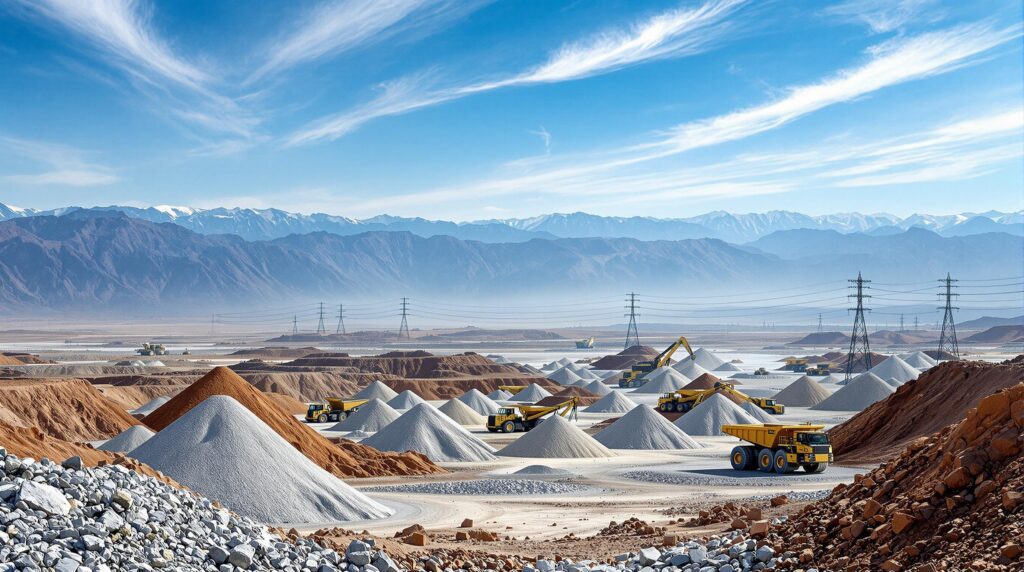President Trump’s drive to fast-track domestic production of critical minerals marks an ambitious pivot aimed squarely at China’s stranglehold on essential materials for technology and defense sectors. By employing the Defense Production Act, Trump’s latest executive order underscores an urgent effort towards bolstering national security and reducing America’s longstanding dependence on foreign imports, particularly from nations wielding hostile geopolitical leverage.
The Push Through the Defense Production Act
When President Trump wielded the powerful tool of the Defense Production Act (DPA), he sent a clear message: America cannot remain vulnerable to the whims of global mineral producers, notably China. The administration hopes that leveraging the DPA will eliminate bureaucratic delays, allowing quicker approvals and expedited developments on identified federal lands rich in vital minerals like uranium, rare earth elements, copper, and potash, each integral to the US defense apparatus and green technologies.
But what does this maneuver truly represent? Is it a realistic path toward national resilience, or could it backfire into environmental recklessness and land misuse?
Historically, the DPA was created during the Korean War to allow swift response in securing resources crucial for national defense. Yet, while this might sound impressive, its invocation now raises concerns regarding environmental oversight and sustainability. Past cases, like the expedited pipeline approvals under previous administrations utilizing similar executive authority, stirred public outcry over ecological harm and Indigenous community rights infringements. Without diligent oversight, this rapid push risks similar fallout.
Streamlining Bureaucracy but Dodging Scrutiny?
At its core, Trump’s directive mandates federal agencies—the Department of the Interior, Defense, and others—to produce immediate lists of pending mining applications to prioritize for swift approval. This aggressive timeline, mere days to identify priority projects, signals a determination to slash bureaucratic red tape often blamed for delays costing American competitiveness on global mineral markets.
Yet, the haste begs a critical question: Is cutting regulatory corners really the safe and responsible way forward? While conservatives celebrate the reduction of red tape for enabling private sector vitality, a liberal lens sees the potential sidelining of crucial environmental assessments and community consultations that have historically protected ecological integrity and social justice. Indeed, history illustrates that swift approvals without careful oversight breed controversy and ecological crises; consider the historical backlash episodes tied to rapid mining project approvals in Latin America and Africa.
“Rapid approvals without thorough consideration of environmental impacts or Indigenous rights have consistently resulted in widespread community conflicts and environmental degradation globally.”
Critics argue that genuine national security is built on responsible, sustainable policies rather than quick, potentially exploitive extraction methods. The challenge is distinct yet solvable: How do we balance the immediate national security imperatives with long-term ecological responsibilities?
Economic Incentives and Investment in Rare Earth Independence
This strategic push isn’t merely governmental; it extends actively into the financial domain. For instance, the US Export-Import Bank recently pledged a blockbuster funding package of up to $553 million for Rare Element Resources’ Bear Lodge Project in Wyoming. This substantial commitment aims to directly reduce reliance on Chinese imports of rare earths, a critical choke point where China currently dominates global supply.
On the surface, the investment offers appealing economic incentives and job creation opportunities. This progression promises robust employment prospects in mineral extraction locales and related industrial sectors, attracting investments crucial for local economic revival, particularly in communities historically dependent on declining industries like coal mining.
Still, liberal economists and environmental groups urge cautious optimism. Many highlight legitimate concerns over the environmental footprint inherent in large-scale domestic extraction industries and encourage heightened transparency around sustainability goals and environmental protections. The danger here: Without rigorous environmental accountability, this development risks perpetuating long-lasting ecological consequences that could overshadow short-term economic gains.
Looking Forward: Building Sustainable Mineral Security
Progressives push for a balanced pathway consistent with robust ecological integrity and national security needs. Encouragingly, numerous frameworks exist to guide responsible resource extraction, including internationally recognized environmental assessment protocols and meaningful community engagement processes, offering viable models to emulate.
Fortunately, paths forward towards sustainable mineral security exist, reflecting a commitment to ecological balance and fair economic opportunities. Embracing rigorous sustainability standards isn’t merely idealistic; rather, it’s pragmatically necessary to ensure a stable, secure, and ethically sound mineral supply chain for America’s future generations.
Ultimately, Trump’s latest policy thrust will undoubtedly change America’s position in geopolitics and global resource ranking. Yet, to achieve lasting benefits, this strategy must integrate environmental justice, stringent sustainability criteria, and thorough community engagement. It’s not merely a question of speeding up approvals but rather of building a durable, equitable system that confidently secures America’s vital mineral backbone without sacrificing core environmental values.

